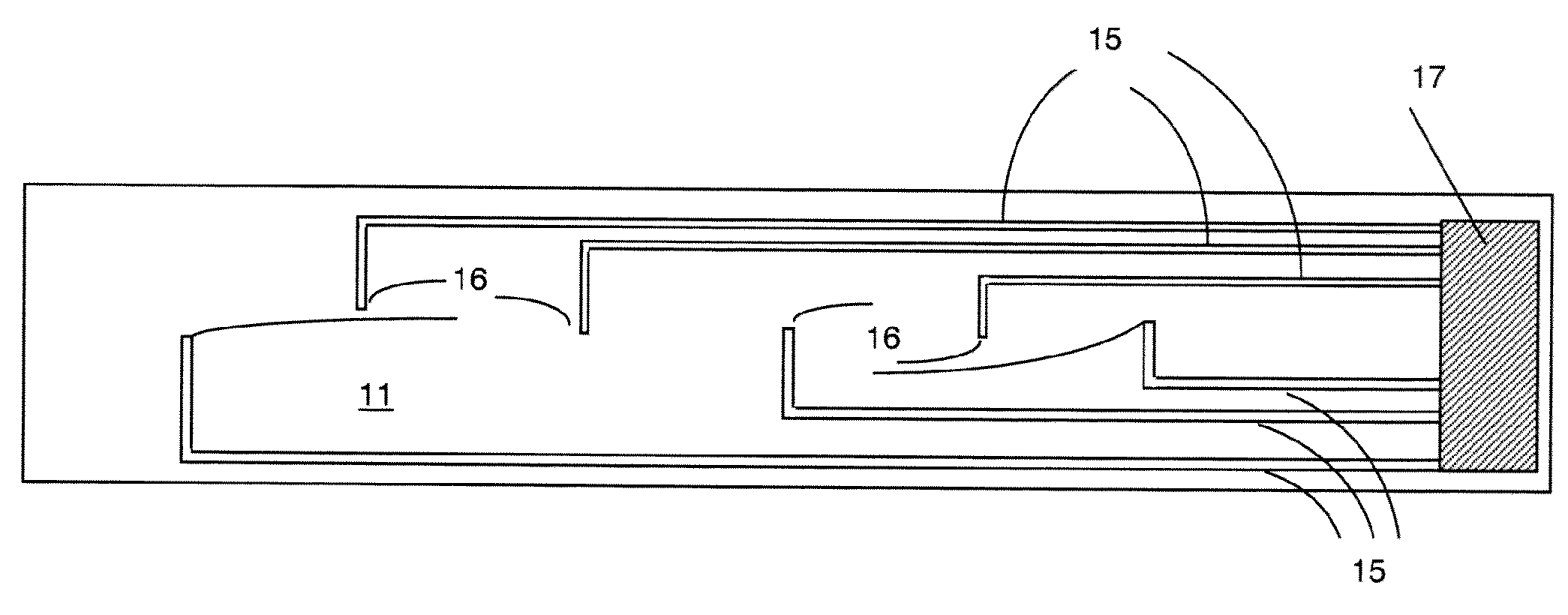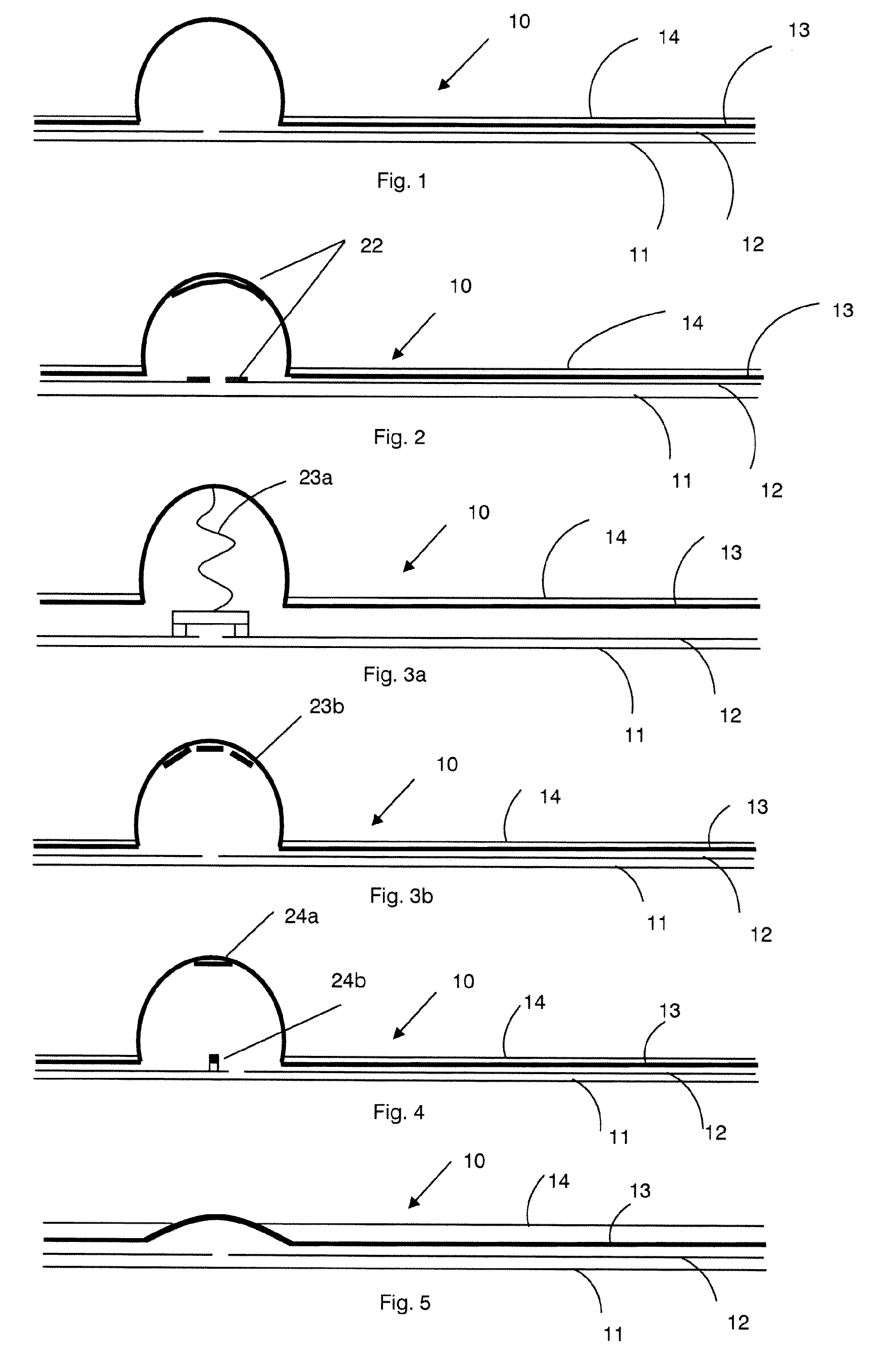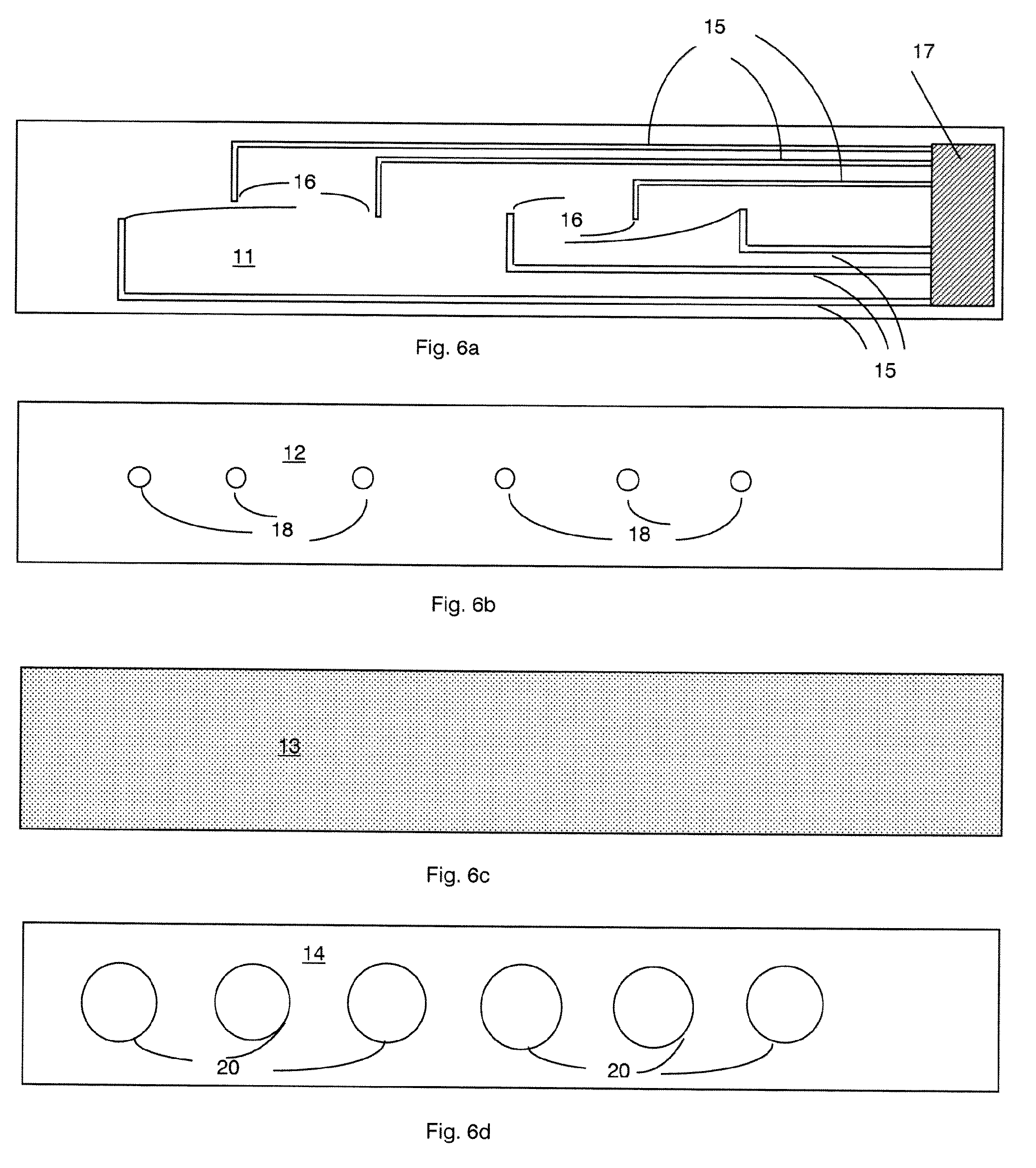Pressure sensor
a pressure sensor and pressure sensor technology, applied in the field of sensors, can solve the problems of insufficient support or failure to maintain the bandage in place, negative consequences on the healing process, and patients' discomfort or harm, and achieve the effects of accurate pressure profile, quick and accurate response to pressure changes, and convenient us
- Summary
- Abstract
- Description
- Claims
- Application Information
AI Technical Summary
Benefits of technology
Problems solved by technology
Method used
Image
Examples
example 1
Pneumatic Sensor
[0037]As shown in FIGS. 1 and 6, such a sensor may comprise a laminate of 4 layers, typically 3 of a plastic material and one of rubber. This provides a pneumatic ultra-thin (approx 2 mm), stable, pressure-sensing device. The construction is such that the two bottom layers form an airtight grooved multi-channel trunking. The third layer is the rubber layer and the top plastics layer has apertures through which the rubber can form an inflated dome. Although shown here as a circular dome this may also be elliptical or other shapes. The number and shape of the domes is not critical, but for this example a 6-dome structure is used. The plastics and rubber laminates are essentially oblong in shape, size and length are not limited, but in this example the width is 30 mm and the length 400 mm, with rounded end. The sensing domes are spaced along the length of the oblong section at suitable distances; the actual spacing is not limited, but in this example the spacing is appr...
example 2
Capacitative Sensor (FIG. 2)
[0047]The construction of a capacitive sensor is as for that of Example 1, with the addition of metal plates fixed to a recess in the top layer, and the inside of the dome is metal-coated. Connecting tracks are on the underside of the diaphragm material or in the grooved ducts. Connection to the electronics unit is via the connection block.
[0048]In operation, the diaphragm is inflated as per the pneumatic version. As the dome expands, the distance from the metal plates on the top layer and the metal on the inside of the dome changes, giving a change in capacitance value. The area of the metal inside the dome would also change, giving additional capacitance change. Once the capacitance value has stabilised (dome fully inflated), then any change in the dome shape would show a measurable change in capacitance. These changes will have a relationship to the pressure that is changing the dome's shape, and can be calibrated to give a linear relationship. On comp...
example 3
Strain Gauge Sensor (FIG. 3)
[0049]Construction of a strain gauge sensor is as for that of Example 2, but with a strain gauge fitted in place of the capacitor plates on the top layer and the centre of the dome attached to the centre of the stain gauge. Two possible versions of the strain gauge are shown in FIGS. 3a and 3b.
[0050]In operation, as the dome is inflated, the centre of the strain gauge is pulled up (3a), changing the strain gauge resistance. When the dome is fully inflated, applied external pressure on the dome will cause changes on the strain gauge proportional to the pressure applied.
[0051]An alternative is to coat the inside of the dome (3b) with a conductive element and this would then become the strain gauge. Again, any change with the inflated dome shape due to external pressure would cause changes to the conductive coating and therefore its resistance. This can then be calibrated to form a relationship between pressure and resistance.
PUM
 Login to View More
Login to View More Abstract
Description
Claims
Application Information
 Login to View More
Login to View More - R&D
- Intellectual Property
- Life Sciences
- Materials
- Tech Scout
- Unparalleled Data Quality
- Higher Quality Content
- 60% Fewer Hallucinations
Browse by: Latest US Patents, China's latest patents, Technical Efficacy Thesaurus, Application Domain, Technology Topic, Popular Technical Reports.
© 2025 PatSnap. All rights reserved.Legal|Privacy policy|Modern Slavery Act Transparency Statement|Sitemap|About US| Contact US: help@patsnap.com



